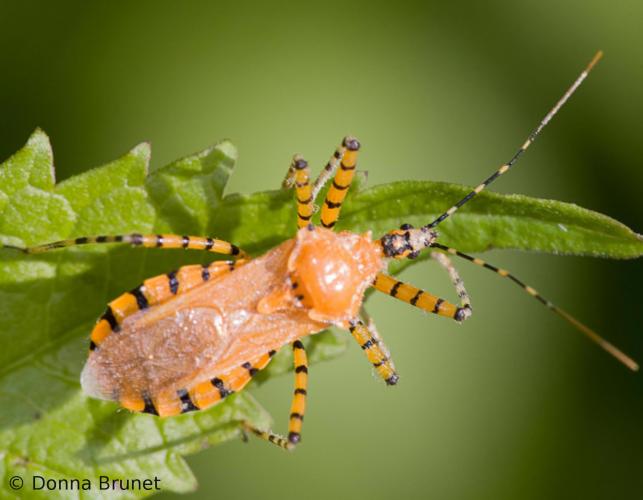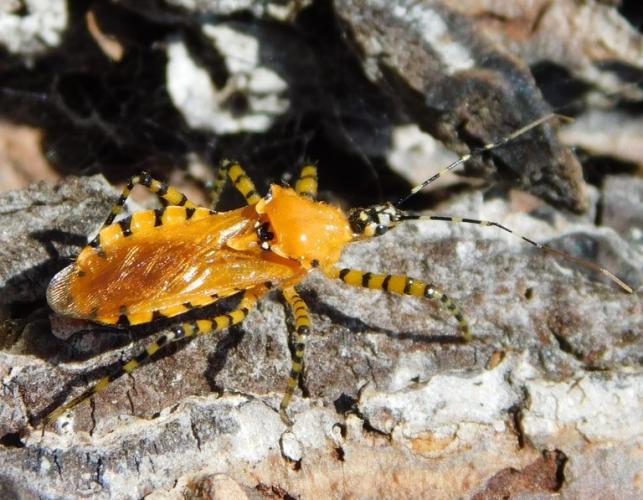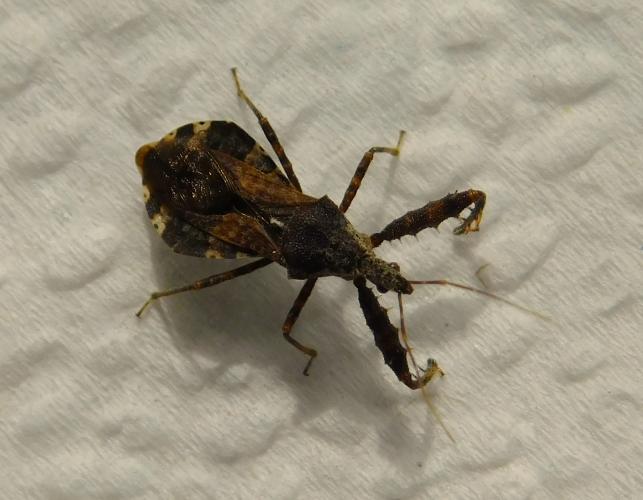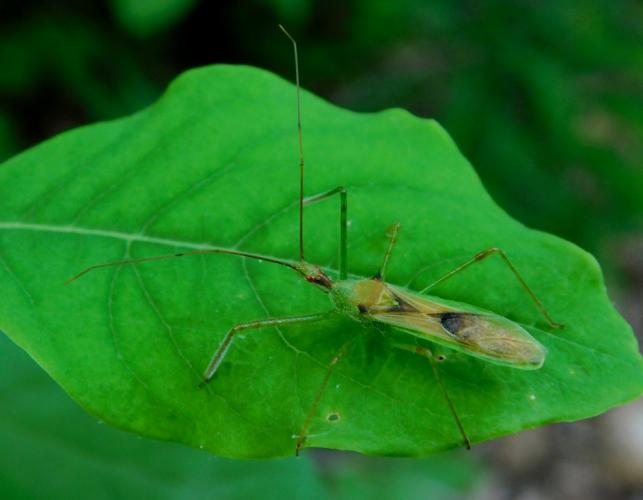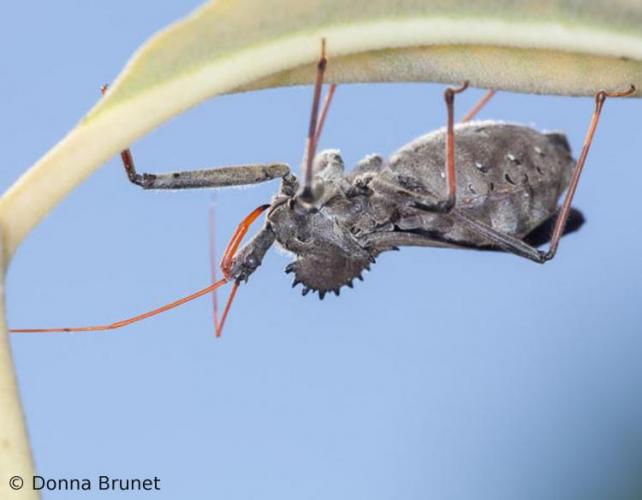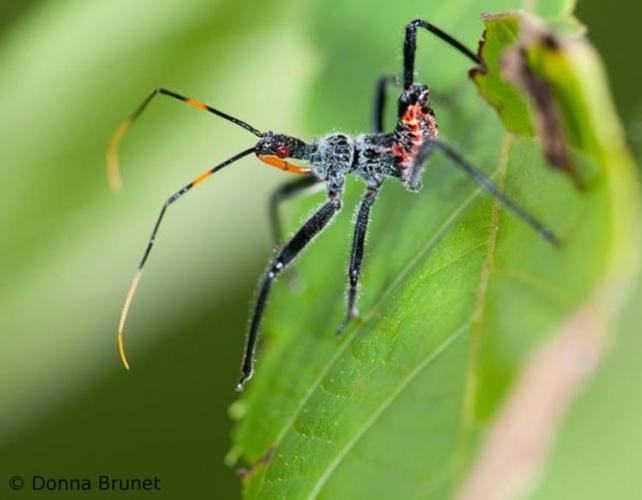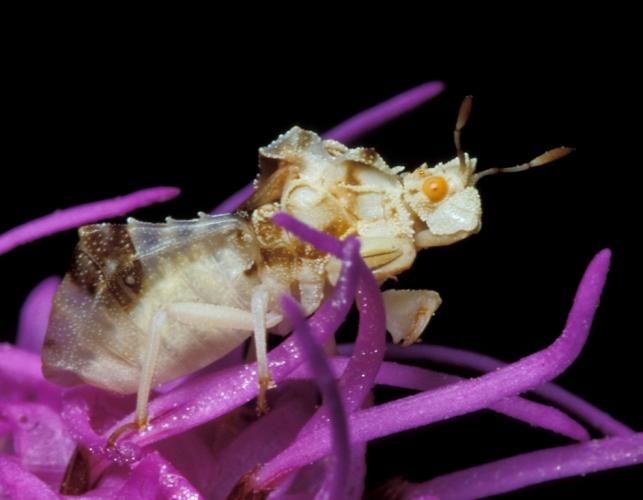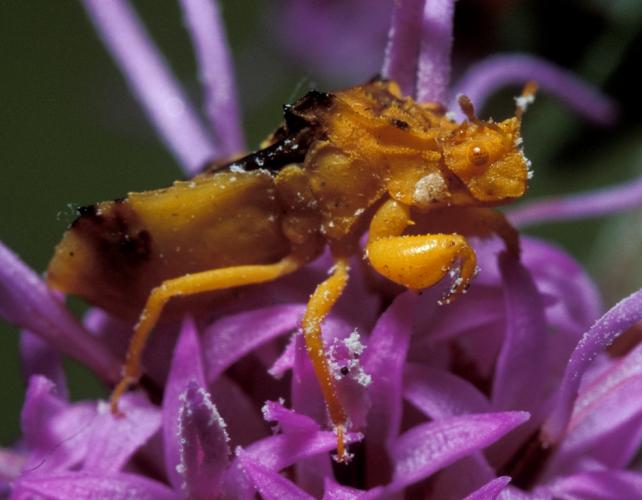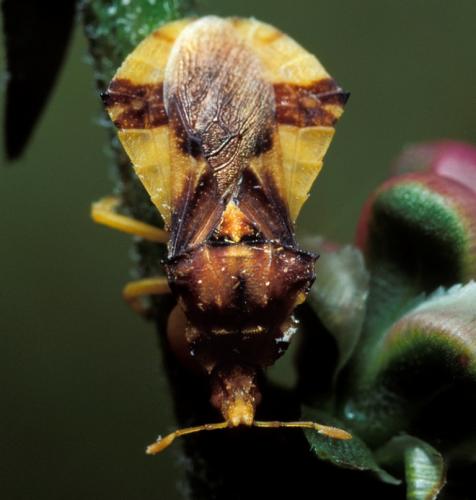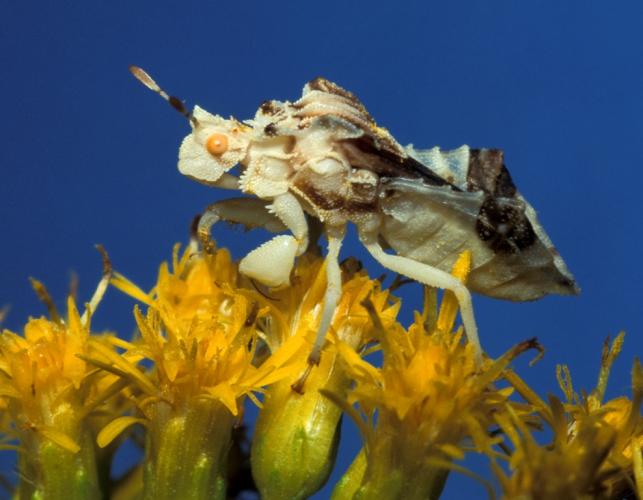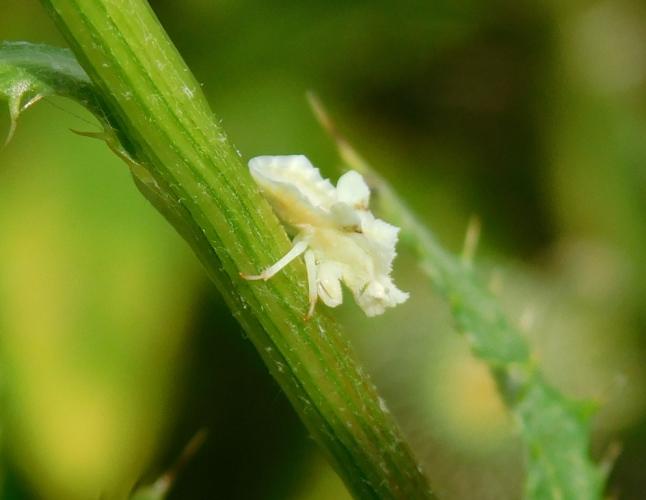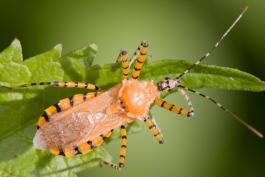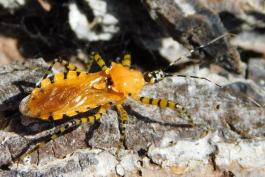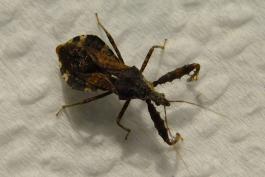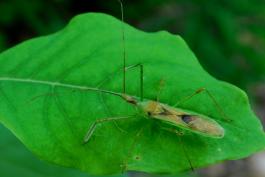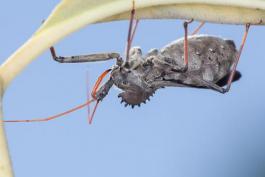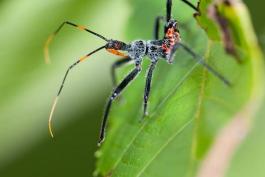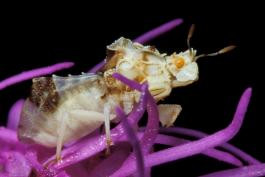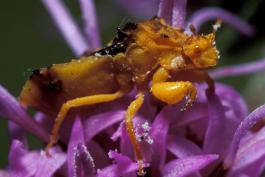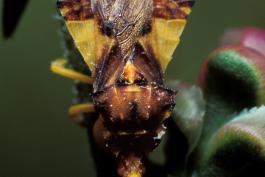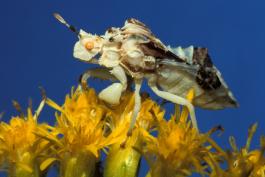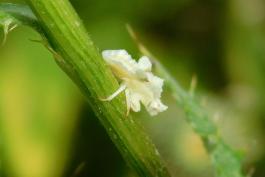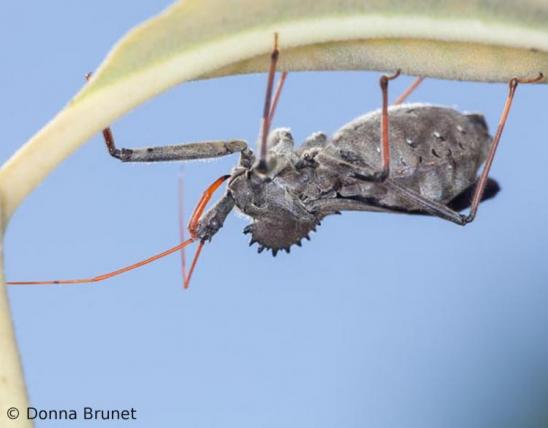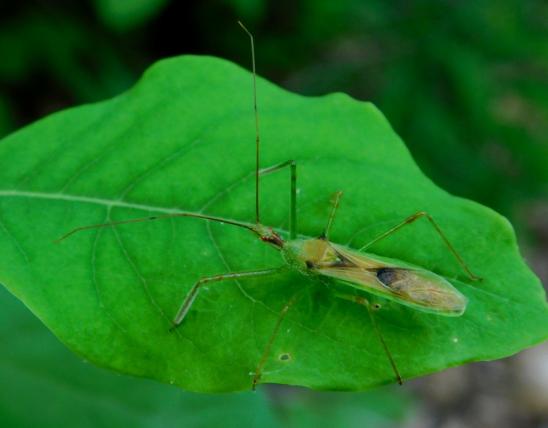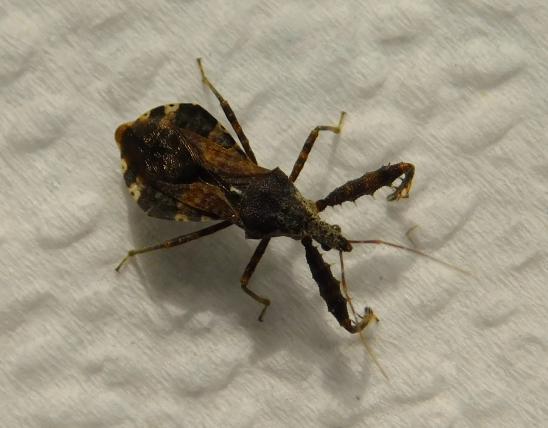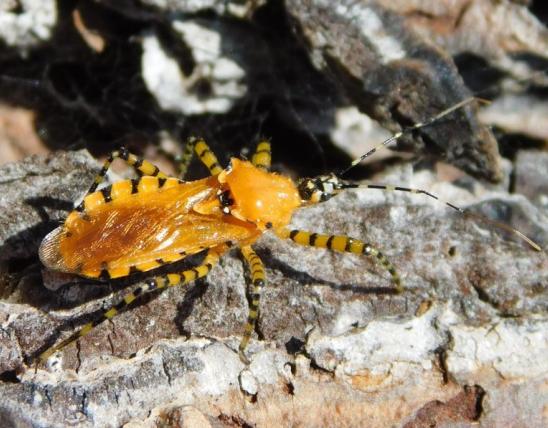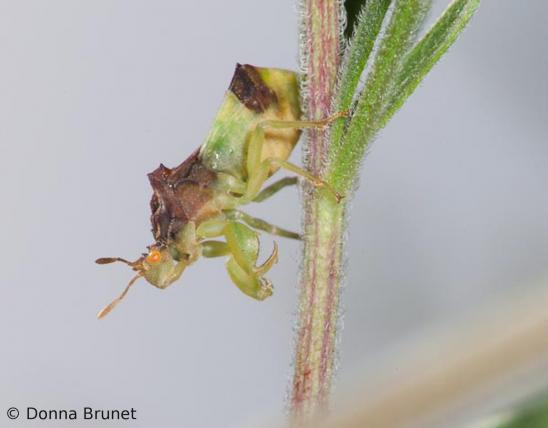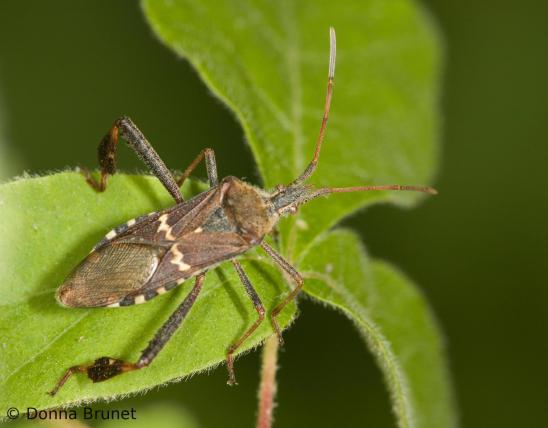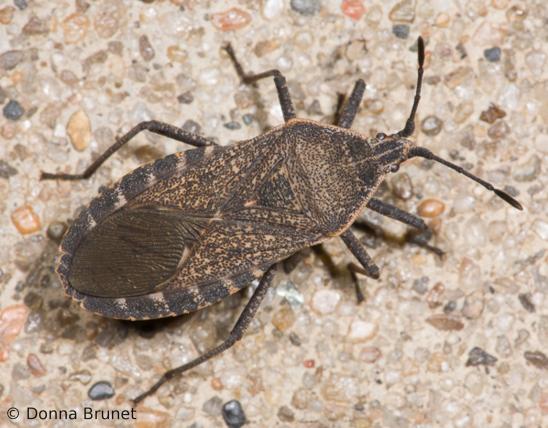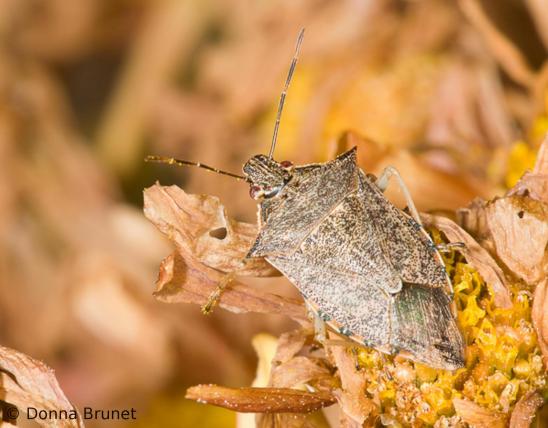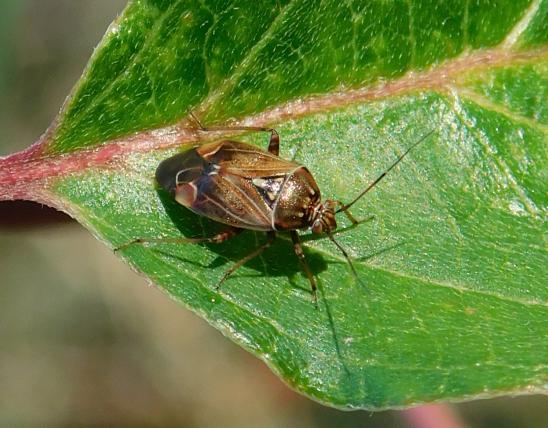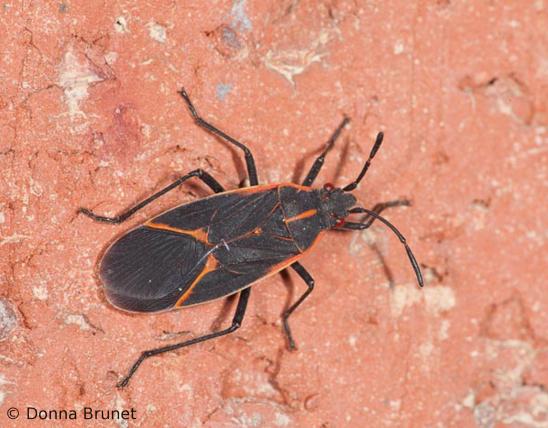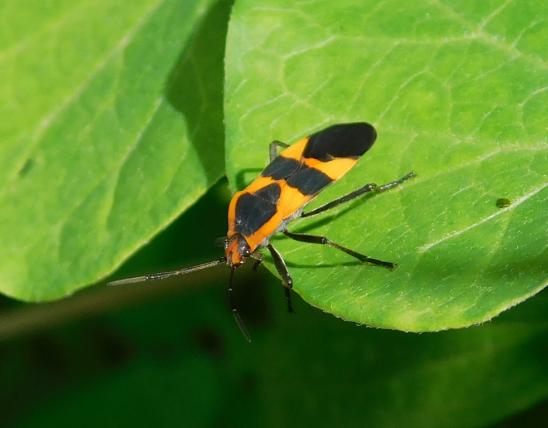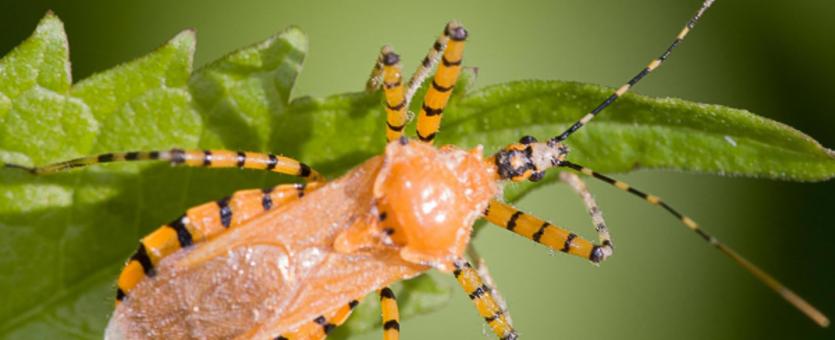
Like most true bugs, members of the assassin bug family have membranous wings that fold flat along the back when at rest (often creating an X pattern on the back) and strawlike mouthparts specialized for piercing and sucking. Assassin bugs are a very large group with diverse body forms, but most are black or brown (sometimes orange, yellow, or red) with a rather oval body. The head is usually narrow and the antennae long, thin, and often jointed. All have a clawlike beak with 3 segments that can fold into a groove beneath the insect’s body. The first segment on the first pair of legs is usually thickened, and the sides of the abdomen often extend beyond wings. Hatchlings often look like ants or baby praying mantises.
The assassin bug family includes the wheel bug (Arilus cristatus), a large, imposing insect identified by its neck crest that looks like the blade of a circular saw, and ambush bugs (numerous species in subfamily Phymatinae), which are relatively small, well camouflaged, and used to be placed in their own family.
Similar species: Leaf-footed bugs (family Coreidae) are commonly mistaken for assassin bugs. Most leaf-footed bugs have flattened, leaflike extensions on their hind legs. Leaf-footed bugs are plant-eaters. The squash bug is one example.
Length: to 1½ inches (varies with species).

Statewide.
Habitat and Conservation
Assassin bugs are good flyers and walkers. They prowl around trees, gardens, and grassy areas, hunting other insects. Most people consider them beneficial, as they help control many insect pests. Handling assassin bugs is not recommended, as they can inflict a painful bite. They sometimes land on people but can be brushed off easily, if they do not soon fly away on their own. Crushing or slapping at them generally causes them to bite.
Food
Like many other true bugs (such as cicadas, aphids, stinkbugs, and leafhoppers), assassin bugs have strawlike mouthparts adapted for sucking nutrients — in this case, it’s the juices of other insects. (One group of assassin bugs sucks blood.) Much like a single-fanged spider, an assassin bug bites its prey, delivering a venom that subdues its insect prey and causes its tissues to liquefy. The “meat” of the insect can then be sucked up through the assassin bug’s strawlike beak.
Status
Common.
Life Cycle
Like many insects, assassin bugs hatch from eggs and molt through a number of immature stages (nymphs) before a final molt in which they emerge as a winged, sexually mature adult. The various stages look generally alike, except that the final stage has wings. This insect life cycle is called incomplete metamorphosis. (The alternative — complete metamorphosis — is the kind undergone by insects like butterflies and beetles, whose wormlike larvae are strikingly different than the adults.)
Human Connections
People who have been bitten by assassin bugs probably are not in love with them. But to the gardener, the farmer, and anyone else “bugged” by insects, the assassin bug is a friend. Luckily, it is easy to avoid getting bitten.
Ecosystem Connections
Assassin bugs are much like spiders and praying mantises: They are top predators in the world of insects, but in the world of vertebrates (birds, mammals, reptiles, and large amphibians and fish), they can be tasty snacks.
